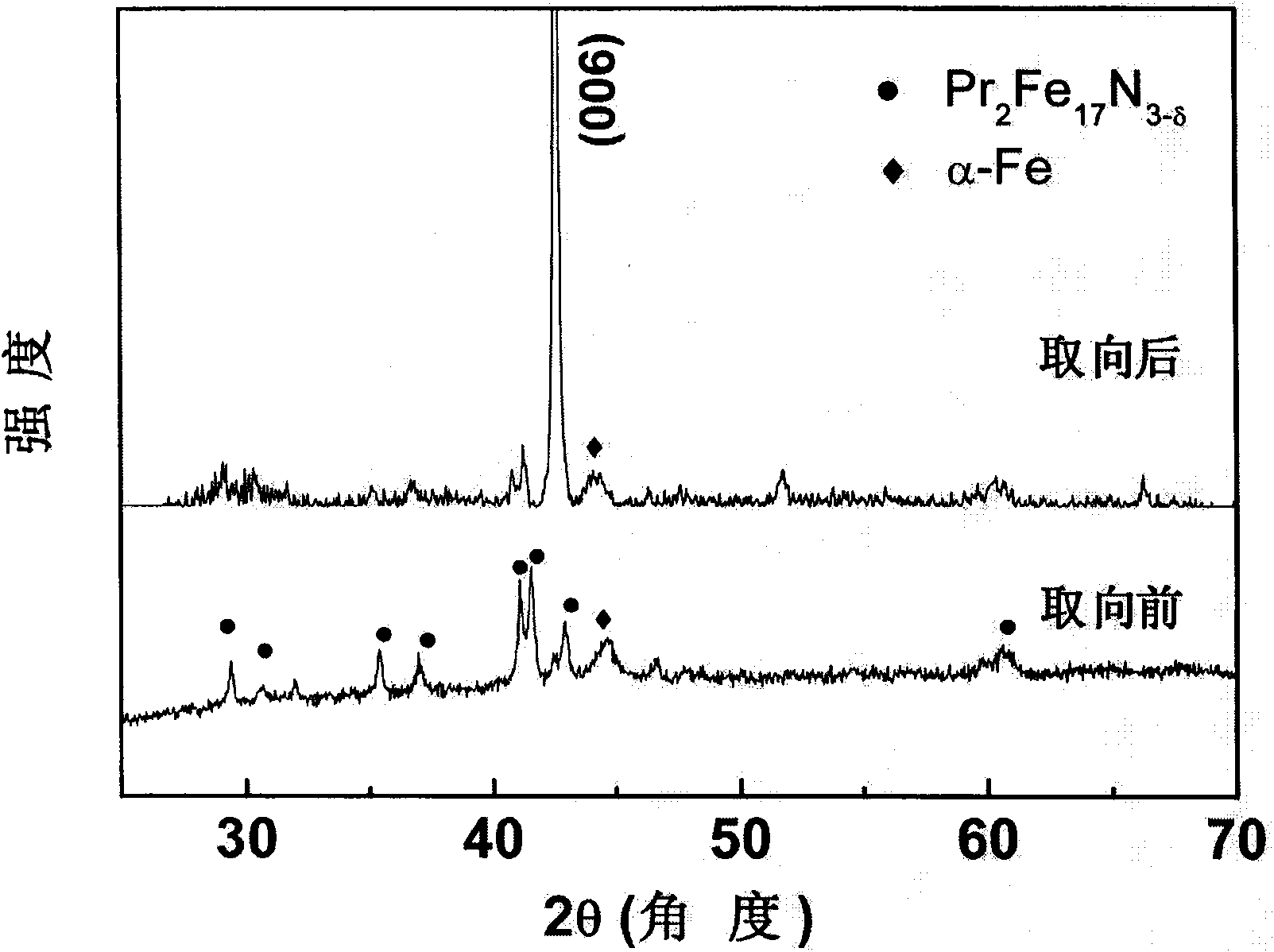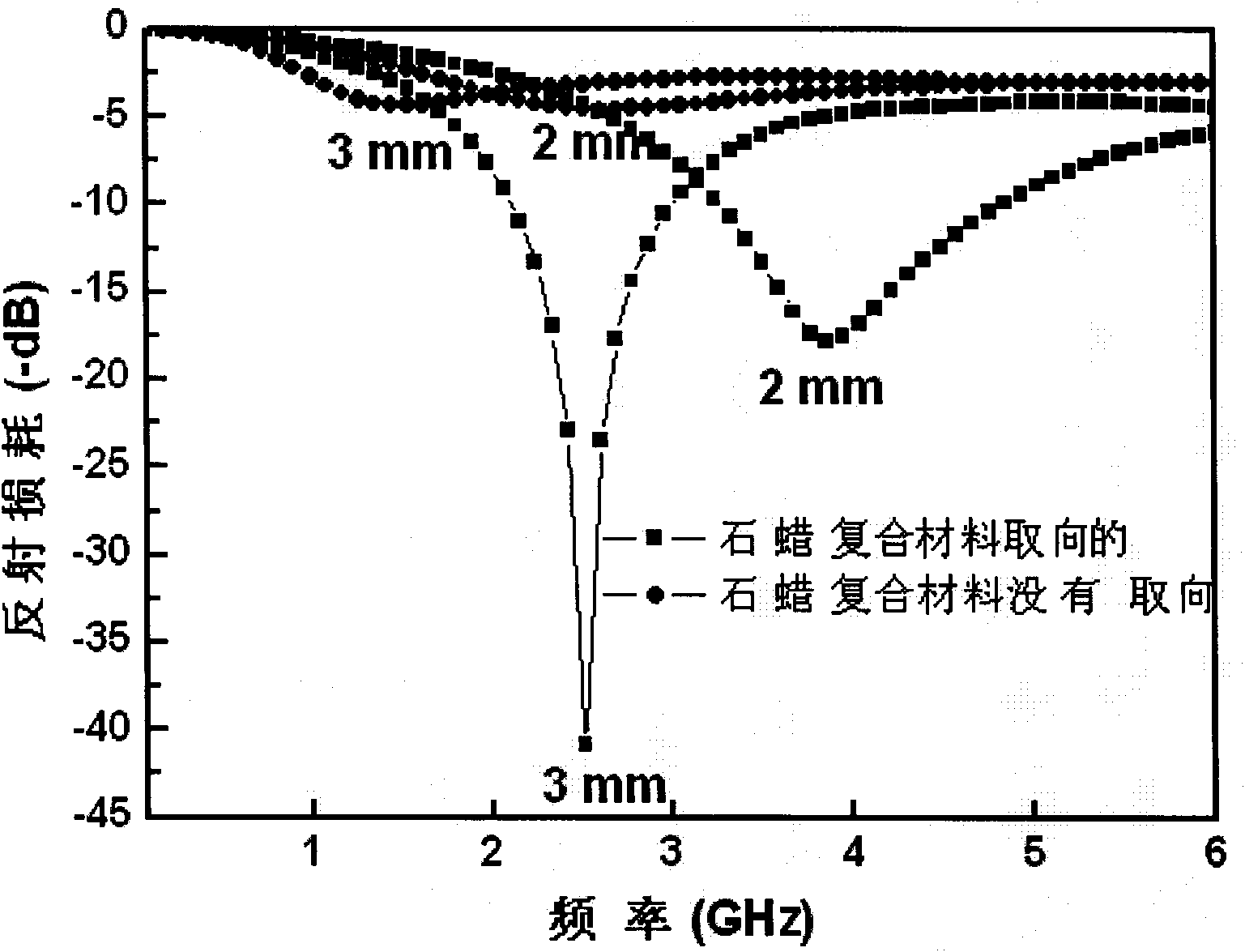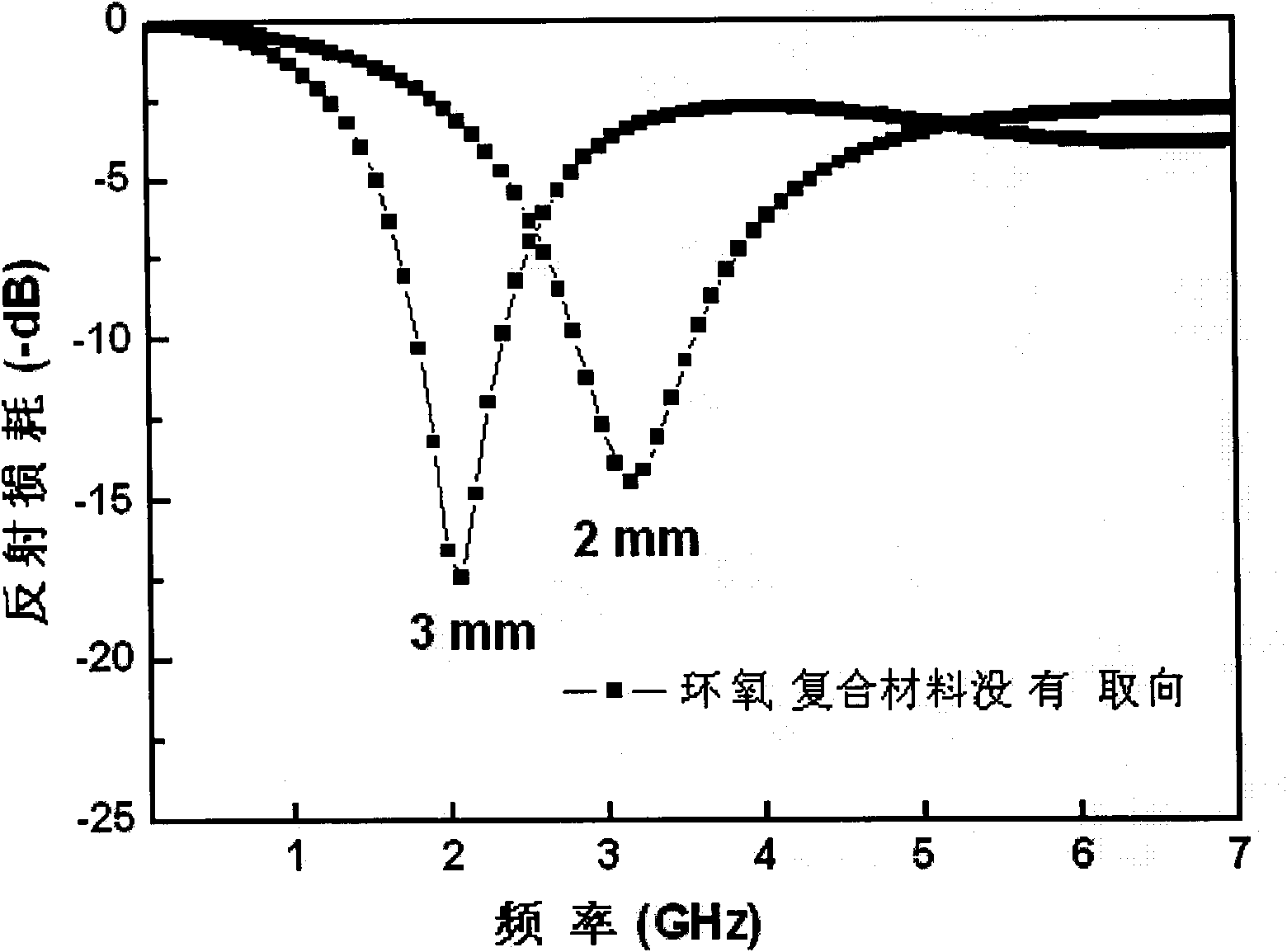Electromagnetic wave absorbing material
A technology of absorbing materials and absorbing composite materials, which is applied in the field of composite materials that can absorb electromagnetic waves, can solve the problems of application limitations, large matching thickness, and unusability, and meet the requirements of miniaturization and integration, weight reduction, and thin matching thickness Effect
- Summary
- Abstract
- Description
- Claims
- Application Information
AI Technical Summary
Problems solved by technology
Method used
Image
Examples
Embodiment 1
[0028] Weigh 2.403g of praseodymium and 7.711g of iron, and smelt them into ingots under the protection of argon. Anneal in a vacuum quartz tube at 1000°C for one week. Grind the annealed ingots with an agate mortar into about 70 micron particles, and then add 100ml isopropanol and 0.2ml phthalate coupling agent to wet mill the particles with a planetary ball mill. The ball-to-battery ratio is 20:1. The speed is 200 revolutions per minute, and the ball milling method is used in forward and reverse rotation. The time interval is 1 hour. The total time of ball milling is set to 8 hours. Finally, the sample is dried and nitrided at 490°C for 2 hours to obtain Pr 2 Fe 17 N 3-δ material. The obtained nitride is added to the titanate coupling agent diluted with isopropanol with a mass ratio of 100:1, stirred and ultrasonicated for 30 minutes, and dried. Then the samples were compounded in 3 situations: (1) The paraffin diluted with n-hexane was mixed uniformly in a volume ratio of 3...
Embodiment 2
[0033] Weigh 2.447g neodymium and 7.670g iron and smelt them into ingots under the protection of argon. Anneal in a vacuum quartz tube at 1000°C for one week. Grind the annealed ingots with an agate mortar into about 70 micron particles, and then add 100ml isopropanol and 0.2ml phthalate coupling agent to wet mill the particles with a planetary ball mill. The ball-to-battery ratio is 20:1. The speed is 200 revolutions per minute, and the ball milling method is used in forward and reverse rotation, and the time interval is 1 hour. The total time of ball milling is set to 8 hours, and finally the sample is dried and nitridated at 490℃ for 2 hours to obtain Nd 2 Fe 17 N 3-δ material. The obtained nitride is added to the titanate coupling agent diluted with isopropanol with a mass ratio of 100:1, stirred and ultrasonicated for 30 minutes, and dried. Then the samples were compounded in 3 situations: (1) The paraffin diluted with n-hexane was mixed uniformly in a volume ratio of 35...
Embodiment 3
[0038] Weigh 2.393g of cerium and 7.721g of iron, and smelt them into ingots under the protection of argon. Anneal in a vacuum quartz tube at 1000°C for one week. Grind the annealed ingots with an agate mortar into about 70 micron particles, and then add 100ml isopropanol and 0.2ml phthalate coupling agent to wet mill the particles with a planetary ball mill. The ball-to-battery ratio is 20:1. The speed is 200 revolutions per minute, and the ball milling method is used in forward and reverse rotation. The time interval is 1 hour. The total time of ball milling is set to 8 hours. Finally, the sample is dried and nitrided at 490°C for 2 hours to obtain Ce 2 Fe 17 N 3-δ material. The obtained nitride is added to the titanate coupling agent diluted with isopropanol with a mass ratio of 100:1, stirred and ultrasonicated for 30 minutes, and dried. Then the samples were compounded in 3 situations: (1) The paraffin diluted with n-hexane was mixed uniformly in a volume ratio of 35:65, ...
PUM
| Property | Measurement | Unit |
|---|---|---|
| thickness | aaaaa | aaaaa |
| thickness | aaaaa | aaaaa |
Abstract
Description
Claims
Application Information
 Login to View More
Login to View More - R&D
- Intellectual Property
- Life Sciences
- Materials
- Tech Scout
- Unparalleled Data Quality
- Higher Quality Content
- 60% Fewer Hallucinations
Browse by: Latest US Patents, China's latest patents, Technical Efficacy Thesaurus, Application Domain, Technology Topic, Popular Technical Reports.
© 2025 PatSnap. All rights reserved.Legal|Privacy policy|Modern Slavery Act Transparency Statement|Sitemap|About US| Contact US: help@patsnap.com



